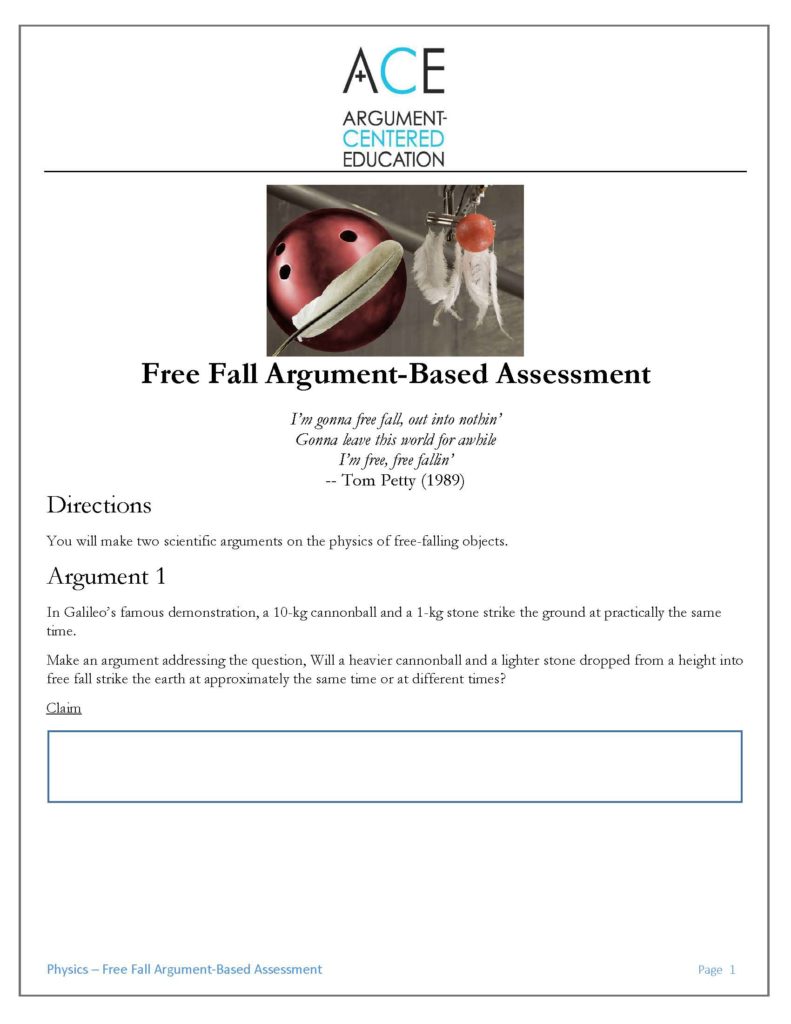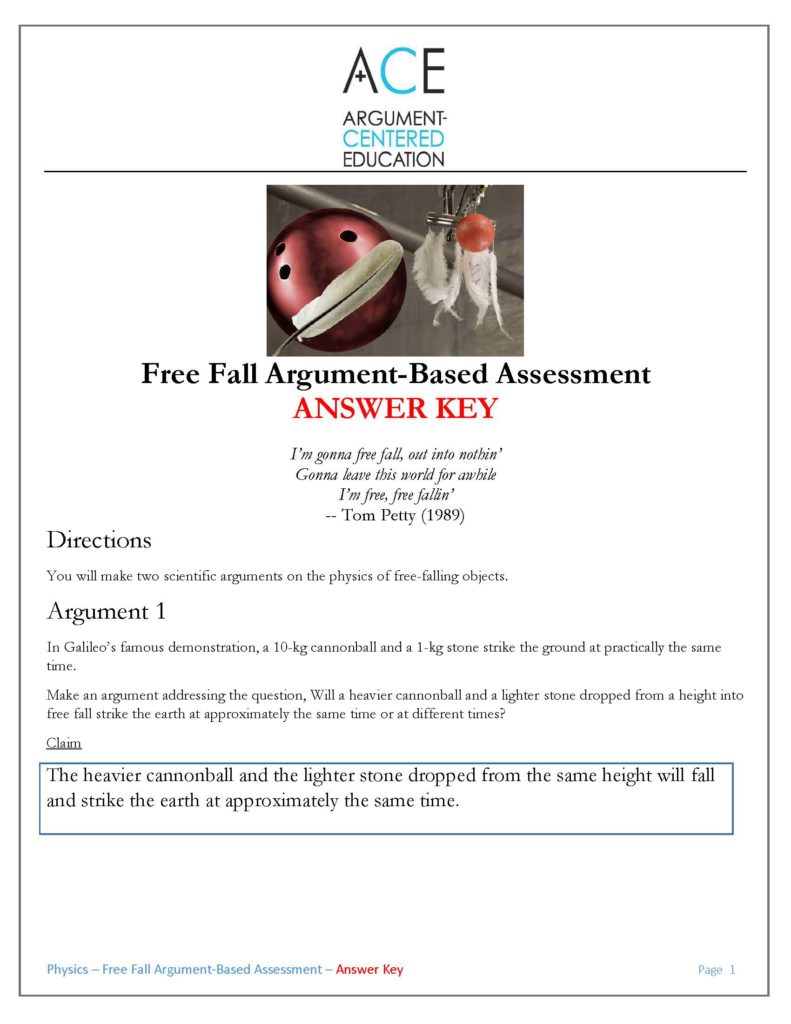
Argument Assessment on Free Falling and Acceleration in Physics
We were recently at work with a partner high school’s science department, argumentalizing a unit in the school’s physics course. In the unit on force, mass, acceleration, we wanted students to complete a formative assessment activity after they studied Newton’s Second Law and viewed experiments on falling objects. The argument-based assessment came out like this.

We also produced an answer key.

In this activity’s argumentation, as is true throughout our pedagogical approach to scientific argument, students make a claim or propose a scientific theory that addresses a question in the natural world; they support that claim with quantitative evidence, often a selection from a data set produced through scientific inquiry and experiment, or it is mathematical computation; and then they analyze through their own reasoning why it is that their data or computation is proof of (or substantial empirical support for) their claim or scientific theory.

